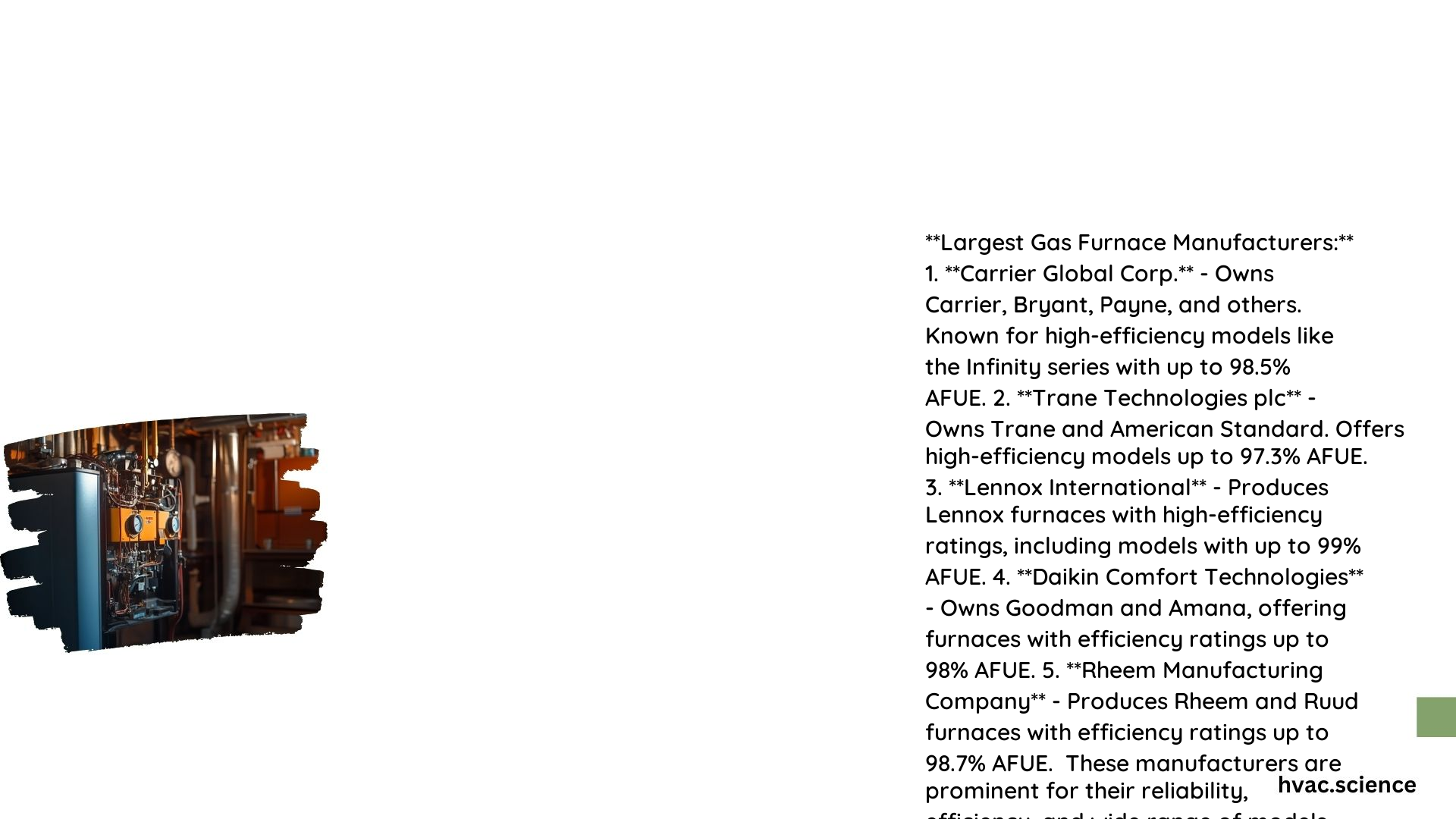Largest Gas Furnace Manufacturers: A Comprehensive Analysis
The gas furnace industry is dominated by a few major players, each with a unique product portfolio, reputation, and market share. Understanding the strengths and offerings of these largest gas furnace manufacturers can help homeowners make an informed decision when it comes to upgrading or replacing their home’s heating system.
What are the Top Gas Furnace Manufacturers and Their Market Share?
The top gas furnace manufacturers in the market include:
- Carrier: A leading brand with a wide range of furnace models, offering various efficiency levels and advanced features like smart-home integration.
- Trane: A well-established brand known for its durable and high-efficiency furnaces.
- Lennox: A pioneer in the furnace industry, offering high-efficiency models with innovative features like precise temperature control and smart capability.
- Goodman: Recognized for its reliability and affordability, catering to different budgetary needs.
- Rheem/Ruud: Offering reliable and efficient furnaces, though with slightly shorter warranties compared to some other brands.
What Factors Contribute to the Reputation for Quality and Reliability of These Manufacturers?
Carrier, Trane, Lennox, Goodman, and Rheem/Ruud have all established strong reputations in the industry for the quality and reliability of their furnace products:
- Carrier: Known for its durable and long-lasting products, with a strong reputation among HVAC technicians and homeowners.
- Trane: Extensive history and focus on heating solutions have earned it a reputation for quality and reliability.
- Lennox: Highly regarded for its high-efficiency models and innovative features, ensuring precise comfort and smart-home integration.
- Goodman: Appreciated for its balance between affordability and reliability, making it a popular choice for many homeowners.
- Rheem/Ruud: While not as long in warranty, these brands are known for their reliable and efficient furnaces.
How Do I Determine the Right Size Gas Furnace for My Home?
When selecting the right size gas furnace, there are several key factors to consider:
- BTU Requirements Based on Square Footage: The general rule of thumb is to use 30-40 BTUs per square foot, but this can vary based on insulation quality, local climate, and other factors.
- Insulation Quality: Better insulation reduces the heating load, allowing for a smaller furnace, while poor insulation may require a larger furnace.
- Local Climate Conditions: Homes in colder climates require more powerful furnaces to maintain warmth, while milder climates can often use smaller furnaces.
What is the Importance of the AFUE Rating When Choosing a Gas Furnace?
The Annual Fuel Utilization Efficiency (AFUE) rating is a crucial factor in determining the efficiency and long-term energy costs of a gas furnace:
- AFUE Rating Impact on Efficiency and Energy Costs: Higher AFUE ratings indicate greater efficiency and lower energy costs.
- Common AFUE Ranges:
- Standard Efficiency: 80-89% AFUE
- Mid-Efficiency: 90-94% AFUE
- High-Efficiency: 95-99% AFUE
What are the Benefits of Choosing a Higher-Efficiency Gas Furnace?
Investing in a higher-efficiency gas furnace can provide several benefits:
- Potential Long-Term Savings on Energy Bills: Higher-efficiency furnaces reduce fuel consumption, leading to lower energy bills over time.
- Reduced Environmental Impact: More efficient furnaces burn less fuel, resulting in lower greenhouse gas emissions and a reduced environmental footprint.
- Available Rebates or Incentives: Many governments and utility companies offer rebates and incentives for installing high-efficiency furnaces, which can help offset the higher upfront cost.
How Do the Costs and Savings Compare Between Standard and High-Efficiency Gas Furnaces?
While high-efficiency furnaces are more expensive upfront, they can provide significant long-term savings:
- Cost Comparison: A high-efficiency furnace costing $8,000 might save $500 annually in energy costs compared to a standard efficiency furnace costing $4,000.
- Break-Even Analysis: The break-even point can be calculated by dividing the difference in upfront costs by the annual savings. For example, if the difference is $4,000 and the annual savings is $500, the break-even point would be 8 years.
It’s important to ensure that the furnace is properly sized for the home through a professional load calculation, considering factors like insulation quality, window size, and local climate. Additionally, the noise level of the furnace should be considered, as some models are designed to be quieter than others.

